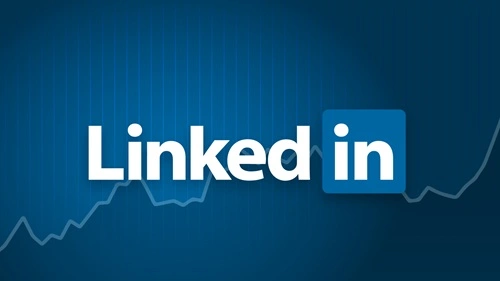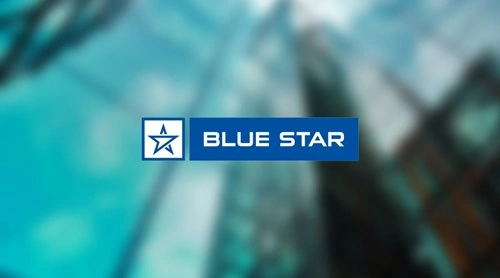LinkedIn, the world’s largest professional networking platform, has become a key player in connecting professionals, businesses, and recruiters across the globe. Launched in 2003, LinkedIn was acquired by Microsoft in 2016 for $26.2 billion and has since grown exponentially, reaching over 990 million members globally by 2024. The platform offers a blend of social networking, job hunting, skill development, and B2B marketing, which underpins its robust business model. Here’s an in-depth look at LinkedIn’s business model and how it generates revenue.
Core Revenue Streams

LinkedIn earns money primarily through three major revenue streams: Talent Solutions, Marketing Solutions, and Premium Subscriptions. These segments address different aspects of professional and business needs, making LinkedIn a comprehensive platform for its users.
1. Talent Solutions
LinkedIn’s Talent Solutions division is its largest revenue generator, accounting for over 65% of its total revenue. It provides tools and services to recruiters, HR professionals, and companies to source, hire, and retain top talent.
- LinkedIn Recruiter: A premium tool for recruiters to find and connect with the right candidates. It offers advanced search filters, candidate recommendations, and communication tools.
- Job Postings: Companies pay to advertise job openings on LinkedIn, which are targeted to relevant candidates based on their profiles and preferences.
- LinkedIn Learning: This feature offers online courses and certifications in business, technology, and creative skills, helping organizations upskill their workforce.
- Employee Branding Solutions: Organizations can enhance their visibility by showcasing their brand as an attractive workplace through LinkedIn’s company pages and employee stories.
The ability to directly connect with skilled professionals and track hiring metrics makes LinkedIn Talent Solutions indispensable for businesses, ensuring a steady revenue stream.
2. Marketing Solutions
LinkedIn’s Marketing Solutions, accounting for approximately 25% of its revenue, cater to businesses looking to advertise to a professional audience. Unlike traditional social media platforms, LinkedIn provides a unique space for B2B marketers to target decision-makers, industry leaders, and other high-value audiences.
- Sponsored Content: Businesses can promote their posts directly in LinkedIn users’ feeds to increase visibility and engagement.
- Sponsored InMail: Personalized messages are sent directly to users’ LinkedIn inboxes, enabling one-on-one interaction with potential clients or customers.
- Display Ads: Static or dynamic banner ads are displayed across the platform, targeting users based on their job roles, industries, and interests.
- Lead Generation Forms: Marketers use LinkedIn to collect leads with pre-filled forms, simplifying the process for users and increasing conversion rates.
LinkedIn’s extensive user data allows precise targeting, making it a preferred platform for B2B advertisers aiming to maximize their return on investment.
3. Premium Subscriptions
Premium Subscriptions contribute roughly 10% of LinkedIn’s revenue. These subscriptions offer enhanced features and tools for professionals, salespeople, and recruiters.
- Premium Career: Aimed at job seekers, it provides features such as access to who viewed your profile, insights on job applications, and the ability to message recruiters directly.
- Premium Business: Designed for professionals who want to grow their network, it includes advanced search options and access to extended profiles.
- Sales Navigator: This tool helps sales professionals identify leads, track prospects, and manage customer relationships.
- Recruiter Lite: A scaled-down version of LinkedIn Recruiter for small businesses and individual recruiters.
The subscription model provides recurring revenue and caters to users willing to pay for added benefits and functionality.
LinkedIn Learning and Development
An extension of its Premium Subscriptions, LinkedIn Learning (formerly Lynda.com) offers a library of over 16,000 online courses. These courses cover various skills, including leadership, data analytics, and coding, enabling professionals to stay competitive in the job market.
LinkedIn Learning is popular among enterprises for employee development programs, further strengthening its revenue base. Individual users can also subscribe to LinkedIn Learning, adding to its profitability.
Direct-to-Consumer Sales Model
LinkedIn operates a hybrid revenue model that combines B2B and B2C sales. On the B2C side, individual users pay for premium subscriptions and learning courses. On the B2B side, LinkedIn provides marketing and recruitment tools to companies. This dual approach allows LinkedIn to maximize revenue across diverse user segments.
Strategic Innovations
LinkedIn has embraced several innovative strategies to enhance user engagement and revenue generation:
- AI Integration: LinkedIn uses artificial intelligence to personalize user experiences, such as content recommendations, job suggestions, and networking opportunities. AI tools also help marketers and recruiters target their audiences more effectively.
- Content Expansion: LinkedIn is positioning itself as a go-to platform for professional content. Features like collaborative articles, newsletters, and LinkedIn Live encourage user-generated content and keep users engaged.
- Mobile and App Optimization: With a growing number of users accessing LinkedIn on mobile devices, the company has optimized its app for seamless navigation, encouraging higher engagement.
- Global Expansion: LinkedIn continues to penetrate emerging markets like India, where it already has over 100 million users. Tailored features and localized content are driving growth in these regions.
Key Financial Highlights
- In fiscal 2023, LinkedIn generated over $15 billion in revenue, reflecting a 5% year-over-year growth.
- Talent Solutions remains the largest contributor, followed by Marketing Solutions and Premium Subscriptions.
- With over 990 million users, LinkedIn’s ability to monetize its growing user base continues to be a key factor in its financial success.
Challenges
While LinkedIn has a strong business model, it faces challenges such as:
- Competition: Platforms like Glassdoor, Indeed, and niche job boards provide stiff competition in recruitment.
- Economic Sensitivity: Marketing and recruitment budgets are often the first to be cut during economic downturns, affecting LinkedIn’s revenue.
- Privacy Concerns: As data privacy regulations tighten globally, LinkedIn must ensure compliance to maintain user trust.
Conclusion
LinkedIn’s business model is a testament to the platform’s ability to leverage its unique professional user base. By diversifying its revenue streams through Talent Solutions, Marketing Solutions, and Premium Subscriptions, LinkedIn continues to solidify its position as a leader in professional networking and B2B marketing. With its focus on innovation, AI integration, and global expansion, LinkedIn is well-positioned to sustain its growth and further enhance its role as a vital tool for professionals and businesses worldwide.

